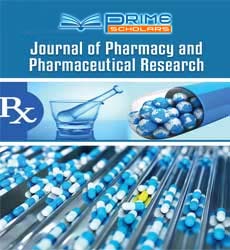Opinion - (2023) Volume 7, Issue 1
Modifications of Exosome Surface Engineering is used to Improve the Penetration Efficiency into the Central Nervous System
Xie Li*
Department of Pharmaceutics, Tianjin Institute of Pharmaceutical Research, China
*Correspondence:
Xie Li,
Department of Pharmaceutics, Tianjin Institute of Pharmaceutical Research,
China,
Email:
Received: 01-Mar-2023, Manuscript No. IPIPR-23-16167;
Editor assigned: 03-Mar-2023, Pre QC No. IPIPR-23-16167 (PQ);
Reviewed: 17-Mar-2023, QC No. IPIPR-23-16167;
Revised: 22-Mar-2023, Manuscript No. IPIPR-23-16167 (R);
Published:
29-Mar-2023, DOI: 10.21767/IPIPR.23.7.007
Introduction
When exosomes are used as drug delivery devices, the most common
route of administration is intravenous injection. For example,
brain endothelium-derived exosomes could reach the brain after
intravenous injection to deliver doxorubicin to treat brain tumors
in zebrafish. In addition, intravenous exosomes have a shorter halflife,
therefore, most are still surface modified. One of the most popular
is to modify neuron-targeting peptides to improve their ability
to target the brain. Intranasal injection enables drug delivery to the
brain via intranasal deposits, olfactory bulbs, trigeminal nerve, and
respiratory epithelium. Therefore, it is often used for brain diseases.
For example, exosomes containing cholesterol modifiers could
be delivered to the brain when administered intranasally and had
therapeutic effects against ischemic brain injury.
Description
A recent study involved the use of a series of patches using autonomously
engineered gel microneedles loaded with cultured MSC
exosomes for exosome repair in spinal cord injury. MSC exosomes
may reduce the neuro-inflammatory response, promote the polarization
of microglia toward the M2 phenotype, and reduce glial
scar formation to facilitate neuronal injury repair. Exosomes inherit
the properties of donor cells and have specific passive targeting
capabilities (also called homing capabilities). However, this natural
homing ability is weak and can be affected by various factors
such as injection method, drug dosage, and individual differences,
which can weaken or eliminate the central nervous system targeting
ability of exosomes. There is even In addition, intravenously
injected naked exosomes have been shown to readily bind RES. An
organ like the liver, it was very difficult to reach the central nervous
system. Genetic engineering of exosomes involves fusing a functional
targeting protein or peptide gene sequence to a selected exosomal membrane protein, after which donor cells transfected
with the above plasmids are engineered with targeting ligands on
their surface to secrete exosomes. As a means of delivering drugs
to the central nervous system, exosomes have several properties
compared to synthetic nanoparticles.
It has low immunogenicity, no toxicity, high cargo-carrying capacity,
protective capacity, and the ability to cross the blood-brain barrier.
Modifications of exosome surface engineering have been widely
used to improve the penetration efficiency into the central nervous
system. However, the structural and functional stability of engineered
exosomes and the mechanisms that enhance CNS targeting
efficiency have not been fully investigated. Therefore, further
research is needed to improve the stability, safety and standardization
of these strategies. Nucleic acids, small compounds doxorubicin,
dopamine, natural products curcumin, paclitaxel, resveratrol,
proteins catalase, pigment epithelium-derived factor. Different
loading methods exist for different types of therapeutic agents and
exosomes, both pre and post-secretion of exosomes.
Conclusion
Genetic engineering, co-culture, electroporation, sonication, extrusion,
and repeated freeze-thaw cycles have been employed. On this
basis, the mechanisms of exosome internalization should be further
investigated to better understand how they work and to select
suitable drug loading methods for different types of therapeutic
molecules. There is increasing evidence that exosomes carrying the
above therapeutic molecules have provided breakthroughs in various
CNS diseases such as brain tumors, neurodegenerative diseases,
multiple sclerosis, brain or spinal cord injury, stroke, drug addiction
and viral infections increase. However, advances in exosome
isolation and purification are needed to fully realize the potential
of exosomes in central nervous system drug delivery systems.
Citation: Li X (2023) Modifications of Exosome Surface Engineering is used to Improve the Penetration Efficiency into the Central Nervous System. J Pharm Pharm Res. 7:007.
Copyright: © 2023 Li X. This is an open-access article distributed under the terms of the Creative Commons Attribution License,which permits unrestricted use, distribution, and reproduction in any medium, provided the original author and source are credited.

